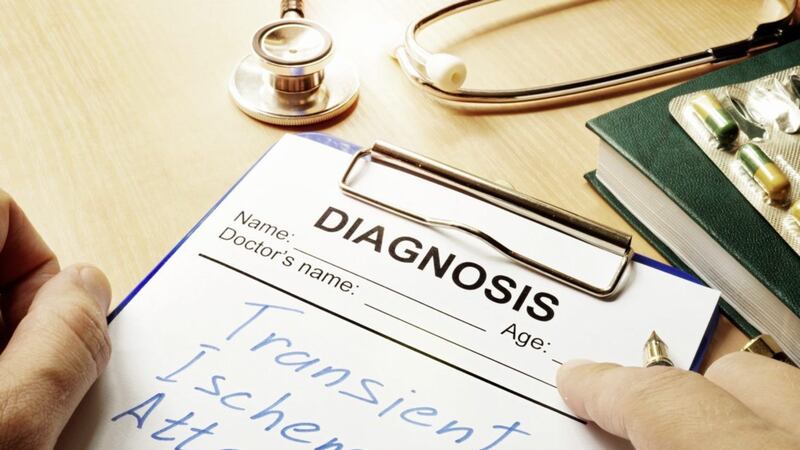A CAMPAIGN aimed at educating people on the signs and dangers of a mini stroke has been launched this week by Northern Ireland Chest Heart and Stroke.
The charity’s Mini Stroke, Massive Warning campaign highlights the symptoms of a mini stroke and the fact that one in 10 people who have a mini stroke, go on to have a full stroke within a week.
A recent survey carried out by the charity revealed that around one fifth of the stroke survivors they work with were diagnosed with a mini stroke (or transient ischaemic attack – TIA – which is the medical term) before going on to have a full stroke. A further 12 per cent believe they had a mini stroke but it was never diagnosed, in most cases because the individual did not go to the doctor.
Consultant stroke physician Dr Brian Gallen, who sits on Northern Ireland Chest Heart and Stroke’s board of governors, says he believes many of the patients he works with had a TIA before their full stroke often without realising it.
“I regularly see patients who have had a TIA before their full stroke. Some have been diagnosed but often when I am assessing and treating them, they will tell me about other recent symptoms, which in retrospect I believe were a TIA," he says.
“Every day I see the devastation that stroke causes. I see patients who have a life of disability ahead of them, partners and families who become carers overnight, and of course the grief of those whose loved ones did not survive.
“There are many way to prevent stroke happening in the first place and a good place to start is by recognising the body’s own warning mechanism, the TIA."
A TIA or mini stroke has the same symptoms and cause as a full stroke.
“It happens when a vessel supplying blood to the brain is temporarily blocked by a clot," Dr Gallen says.
The symptoms, which are the same as for stroke, are summarised by FAST:
Face – has their face fallen on one side? Can they smile?
Arms – can they raise both arms and keep them there? And don’t forget legs – the patient’s ability to walk is often affected too.
Speech – is their speech slurred?
Time to call 999.
“The difference between a TIA and a full stroke is that during a TIA the body breaks down the clot before any lasting damage has been done to the brain, and blood flow is resumed.
“But when you are experiencing the symptoms, you don’t know if they will go away or not, so you need to call 999. And if the symptoms do disappear, then you should not cancel the ambulance. It may be temporary, but a TIA should not be ignored because it is a serious warning that something is wrong with the blood flow to your brain and a full stroke could happen in the future. You need to see a stroke specialist and be referred to a TIA clinic.
“The statistics say it all – 1 in 10 people who have a mini stroke go on to have a full stroke within a week but a recent study has shown that if someone gets treatment for a TIA, for example through a TIA clinic, their risk of a full stroke is reduced."
The campaign is also supported by Ireland and Ulster rugby player Chris Henry who is one of the charity’s ambassadors and who suffered a mini stroke before an international match in 2014.
Chris said: “Suffering a mini stroke was a truly terrifying experience. I’m very grateful and was lucky to be in an environment where medical experts were on hand so quickly. Many others aren’t so lucky.
“My story has a happy ending but it has left me determined to raise awareness of mini strokes. I hope the message gets through to people so they can recognise the symptoms and know to call 999.”
:: For more information see nichs.org.uk








